Finding the right words matters. Saying “I don’t care” may sound cold or dismissive, even if you don’t mean it that way. The truth is, many of us sometimes want to express indifference, freedom, or flexibility — but in a way that feels warmer, kinder, and more thoughtful. In this guide, we’ll explore 20 other ways to say “I don’t care”, with examples, so you can communicate without sounding harsh.
These alternatives will help you show empathy, stay professional, and sound more positive, whether you’re talking with friends, family, or coworkers.
What Does “I Don’t Care” Mean?
At its core, “I don’t care” simply means you are not affected, worried, or invested in a situation. It can mean you’re fine with any outcome, or that something doesn’t bother you. However, because the phrase can feel blunt, people often look for softer and more respectful ways to say it.
Is It Professional/Polite to Say “I Don’t Care”?
Not always. In professional or personal conversations, “I don’t care” might sound like you’re ignoring the other person’s feelings. A better approach is to use alternatives that show flexibility, openness, or emotional balance. Phrases like “I’m okay with whatever works best for you” or “I’m flexible” are much more polite while keeping the same meaning.
Synonyms For I Don’t Care
- I’m flexible
- I don’t mind
- Whatever works best
- I’m good either way
- I’m okay with anything
- I trust your choice
- No preference
- I’m open
- Works for me
- Either is fine
- I’m happy with whatever
- You decide
- It doesn’t bother me
- I’ll go along with that
- I’m fine with that
- I’ll leave it up to you
- It’s all the same to me
- I’m okay either way
- I’m easy
- It makes no difference to me
1. I’m flexible
Meaning: This phrase shows that you are open to different options and willing to adapt.
Scenario: Useful in professional meetings, group decisions, or casual plans.
Examples:
- “We can go to any restaurant — I’m flexible.”
- “I’m flexible with the time, just let me know what works.”
- “I’m flexible, so we can do what’s easiest for you.”
- “I’m flexible if you want to change the plan.”
- “Don’t worry, I’m flexible with deadlines.”
Tone: Friendly and accommodating.
Explanation: Saying “I’m flexible” highlights openness without dismissing the other person’s choices.
2. I don’t mind
Meaning: A softer way to show you’re okay with whatever happens.
Scenario: Often used in casual or personal conversations.
Examples:
- “We can watch that movie — I don’t mind.”
- “I don’t mind if we eat out or stay in.”
- “I don’t mind walking instead of driving.”
- “I don’t mind if you call later.”
- “Sure, I don’t mind helping with that.”
Tone: Easygoing and considerate.
Explanation: It’s neutral but polite, signaling acceptance without being careless.
3. Whatever works best
Meaning: You leave the decision to others and show support.
Scenario: Great for teamwork, group choices, or scheduling.
Examples:
- “We can meet tomorrow or next week — whatever works best.”
- “Whatever works best for the team is fine with me.”
- “I’m happy with whatever works best for you.”
- “We can adjust the plan — whatever works best.”
- “Whatever works best with your schedule is okay.”
Tone: Cooperative and respectful.
Explanation: This shows care and willingness to put others’ needs first.
4. I’m good either way
Meaning: You’re fine with any choice, showing calm acceptance.
Scenario: Used in both casual and professional settings.
Examples:
- “We can start early or late — I’m good either way.”
- “Dinner at home or out? I’m good either way.”
- “We can take notes or record the meeting — I’m good either way.”
- “I’m good either way, no pressure.”
- “Pick whichever option — I’m good either way.”
Tone: Relaxed and friendly.
Explanation: It feels balanced and reassuring, avoiding negativity.
5. I’m okay with anything
Meaning: A more open and gentle version of “I don’t care.”
Scenario: Everyday conversations about food, movies, or plans.
Examples:
- “Choose the game — I’m okay with anything.”
- “We can order pizza or pasta — I’m okay with anything.”
- “I’m okay with anything, just happy to spend time together.”
- “Pick the topic — I’m okay with anything.”
- “I’m okay with anything for the schedule.”
Tone: Warm and supportive.
Explanation: Keeps the mood light and positive, not dismissive.
6. I trust your choice
Meaning: You’re giving someone confidence in making the decision.
Scenario: Perfect for teamwork, relationships, or decision-sharing.
Examples:
- “I trust your choice for the design.”
- “Order what you think is good — I trust your choice.”
- “I trust your choice, you know best.”
- “Whichever movie you pick, I trust your choice.”
- “I trust your choice with the schedule.”
Tone: Respectful and affirming.
Explanation: Builds trust and connection, unlike “I don’t care.”
7. No preference
Meaning: You’re neutral but polite.
Scenario: Quick, professional, or casual discussions.
Examples:
- “I have no preference for the meeting time.”
- “No preference, go ahead with what’s best.”
- “I really have no preference between the two.”
- “I have no preference, just let me know.”
- “It’s up to you, I have no preference.”
Tone: Professional and straightforward.
Explanation: Clear, short, and non-dismissive.
8. I’m open
Meaning: Shows you’re receptive to options.
Scenario: Great for both social and work conversations.
Examples:
- “I’m open to ideas.”
- “I’m open to suggestions for dinner.”
- “I’m open if you want to try something new.”
- “I’m open to adjusting the schedule.”
- “I’m open to changes if needed.”
Tone: Encouraging and flexible.
Explanation: Promotes openness and collaboration.
9. Works for me
Meaning: Easy agreement without sounding careless.
Scenario: Casual or quick replies.
Examples:
- “Let’s meet at 3 — works for me.”
- “Pizza tonight? Works for me.”
- “That schedule works for me.”
- “Taking the train works for me.”
- “Your plan works for me.”
Tone: Simple and agreeable.
Explanation: Short but warm, making it sound effortless.
10. Either is fine
Meaning: You’re okay with any option.
Scenario: Quick responses when someone offers choices.
Examples:
- “We can meet today or tomorrow — either is fine.”
- “Tea or coffee? Either is fine.”
- “This color or that one? Either is fine.”
- “Morning or evening? Either is fine.”
- “Zoom or in person? Either is fine.”
Tone: Neutral but cooperative.
Explanation: Simple, yet non-dismissive and polite.
11. I’m happy with whatever
Meaning: Shows contentment with any outcome.
Scenario: Lighthearted, casual discussions.
Examples:
- “Pick the movie — I’m happy with whatever.”
- “I’m happy with whatever food you like.”
- “I’m happy with whatever you choose for the team.”
- “Let’s go where you want — I’m happy with whatever.”
- “I’m happy with whatever works.”
Tone: Cheerful and kind.
Explanation: Communicates positivity and ease.
12. You decide
Meaning: Passing the choice to someone else respectfully.
Scenario: Often used in personal or group decisions.
Examples:
- “I can’t choose — you decide.”
- “You decide where we eat.”
- “You decide which color looks best.”
- “You decide when we meet.”
- “It’s up to you — you decide.”
Tone: Respectful and light.
Explanation: Shows trust and collaboration.
13. It doesn’t bother me
Meaning: You’re unaffected by the outcome.
Scenario: Polite when responding to casual matters.
Examples:
- “We can switch days, it doesn’t bother me.”
- “It doesn’t bother me if we’re late.”
- “That plan doesn’t bother me.”
- “It doesn’t bother me if we cancel.”
- “Choose the option — it doesn’t bother me.”
Tone: Calm and understanding.
Explanation: Softer than “I don’t care,” yet clear and polite.
14. I’ll go along with that
Meaning: You’re willing to follow someone else’s choice.
Scenario: Helpful for teamwork or casual agreement.
Examples:
- “I’ll go along with that schedule.”
- “I’ll go along with that idea.”
- “Your plan sounds fine — I’ll go along with that.”
- “I’ll go along with that choice for dinner.”
- “I’ll go along with that change.”
Tone: Cooperative and kind.
Explanation: Emphasizes team spirit and acceptance.
15. I’m fine with that
Meaning: A softer way to agree without sounding cold.
Scenario: Everyday discussions or work planning.
Examples:
- “Sure, I’m fine with that.”
- “I’m fine with that option.”
- “I’m fine with that decision.”
- “We can do it your way — I’m fine with that.”
- “No problem, I’m fine with that.”
Tone: Gentle and agreeable.
Explanation: Sounds understanding and respectful.
16. I’ll leave it up to you
Meaning: You trust someone else’s judgment.
Scenario: Perfect when you want others to decide.
Examples:
- “I’ll leave it up to you to choose.”
- “You know better, so I’ll leave it up to you.”
- “I’ll leave it up to you to decide dinner.”
- “I’ll leave it up to you about the schedule.”
- “I’ll leave it up to you to handle that.”
Tone: Respectful and thoughtful.
Explanation: Encourages empowerment and trust.
17. It’s all the same to me
Meaning: Both options feel equal to you.
Scenario: Neutral choice in casual settings.
Examples:
- “We can stay in or go out — it’s all the same to me.”
- “This or that design — it’s all the same to me.”
- “Morning or evening? It’s all the same to me.”
- “Which seat? It’s all the same to me.”
- “Dinner at 7 or 8 — it’s all the same to me.”
Tone: Neutral but not harsh.
Explanation: Shows calm acceptance without sounding dismissive.
18. I’m okay either way
Meaning: Another way of showing openness to both choices.
Scenario: Used in flexible situations.
Examples:
- “We can travel today or tomorrow — I’m okay either way.”
- “I’m okay either way with the meeting time.”
- “Pick whichever, I’m okay either way.”
- “I’m okay either way, no stress.”
- “This or that option, I’m okay either way.”
Tone: Friendly and reassuring.
Explanation: A gentle and positive way of agreeing.
19. I’m easy
Meaning: A casual phrase showing you’re open to options.
Scenario: Informal and friendly contexts.
Examples:
- “Wherever you want to eat — I’m easy.”
- “I’m easy with the plan.”
- “I’m easy, just tell me what works.”
- “I’m easy, anything’s fine.”
- “I’m easy, you choose.”
Tone: Relaxed and laid-back.
Explanation: Works well in casual talk, but less professional.
20. It makes no difference to me
Meaning: Shows neutrality without sounding uncaring.
Scenario: Polite in both casual and formal conversations.
Examples:
- “We can change the day — it makes no difference to me.”
- “Tea or coffee? It makes no difference to me.”
- “That time works too — it makes no difference to me.”
- “It makes no difference to me if we swap tasks.”
- “Your choice — it makes no difference to me.”
Tone: Calm and neutral.
Explanation: Keeps the mood respectful and professional.
Conclusion
While saying “I don’t care” can sound blunt or dismissive, using softer, warmer alternatives makes a big difference. Phrases like “I’m flexible”, “Whatever works best”, or “I trust your choice” help you stay kind, respectful, and considerate. Choosing thoughtful words not only avoids misunderstandings but also builds stronger connections in your personal and professional life.
FAQs
1. What’s the kindest way to say “I don’t care”?
The kindest way is to say “Whatever works best for you” or “I trust your choice”.
2. Can I use “I don’t care” in the workplace?
It’s better to avoid it. Use alternatives like “I’m flexible” or “No preference”.
3. What’s a casual alternative to “I don’t care”?
“I’m easy” or “Works for me” are casual and friendly.
4. How do I politely say “I don’t care” in a group decision?
Say “I’m happy with whatever works best for everyone.”
5. What’s a professional alternative to “I don’t care”?
“I’m flexible”, “No preference”, or “It makes no difference to me.”
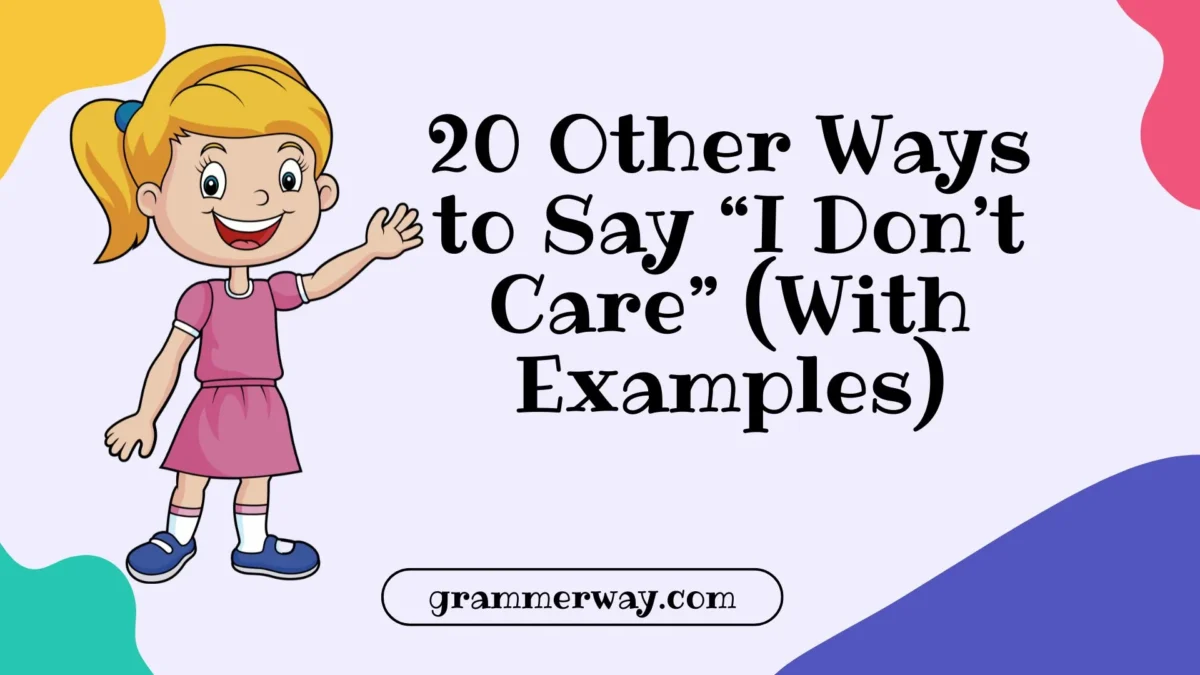
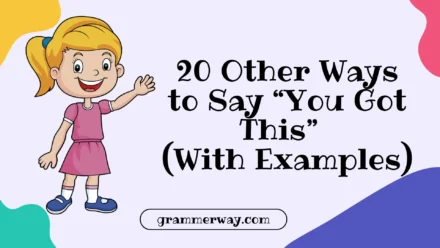
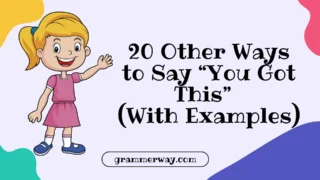


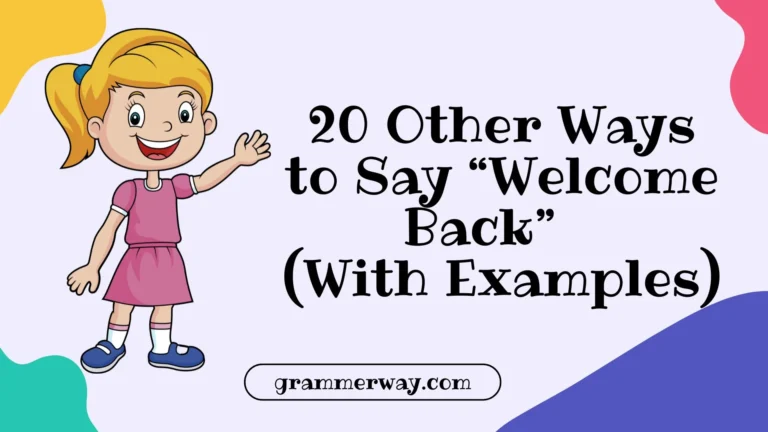
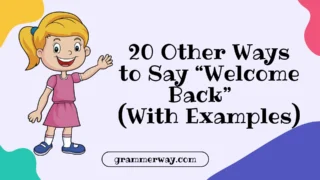
Leave a Comment